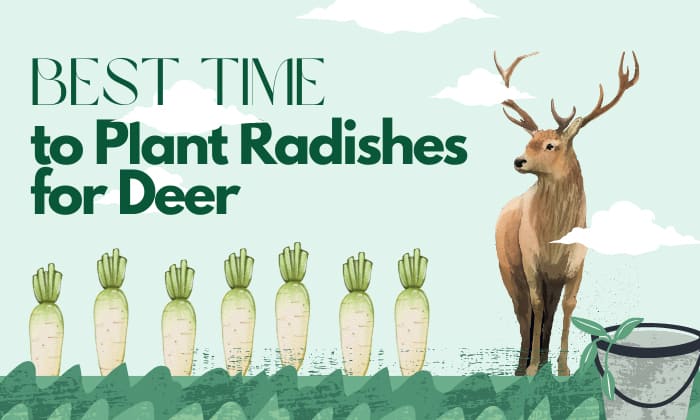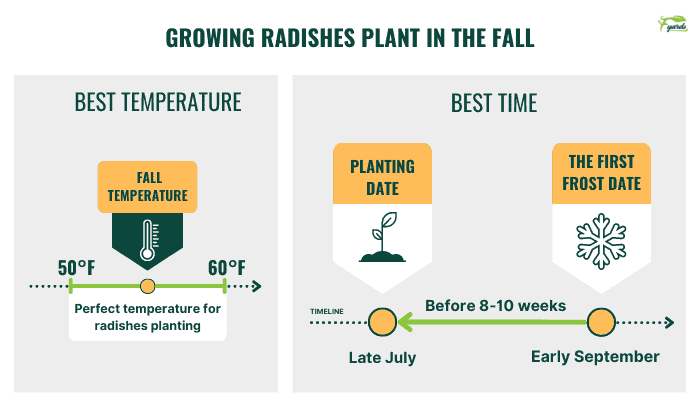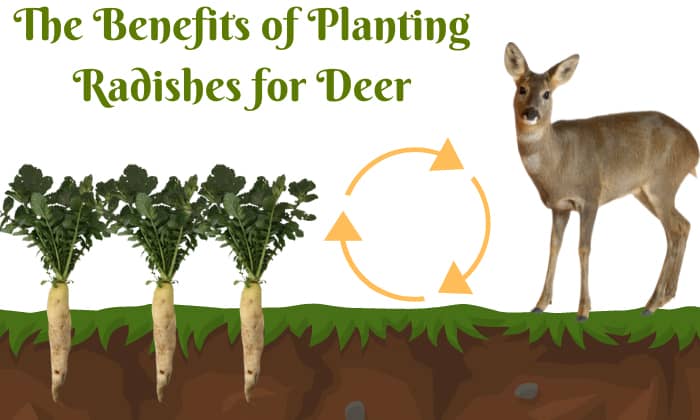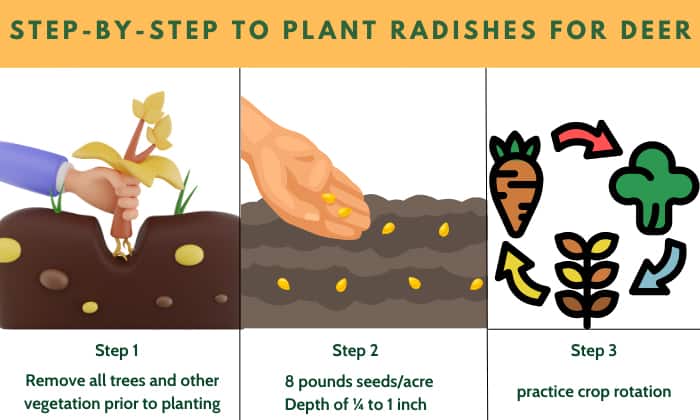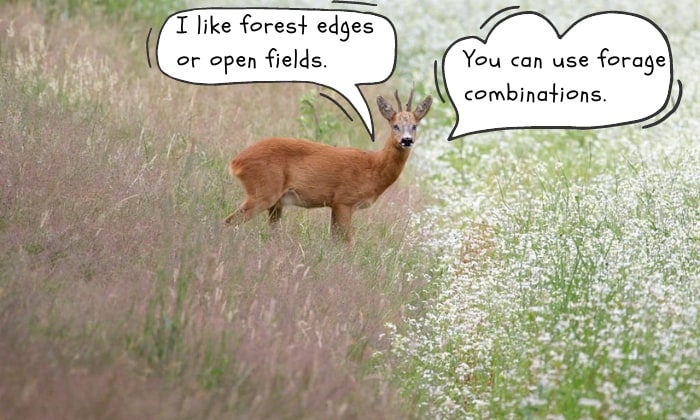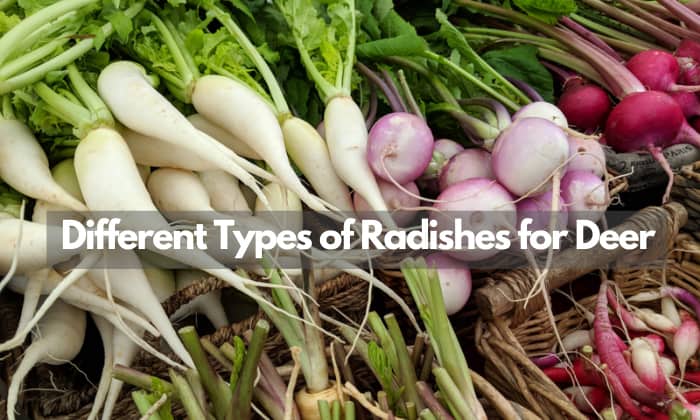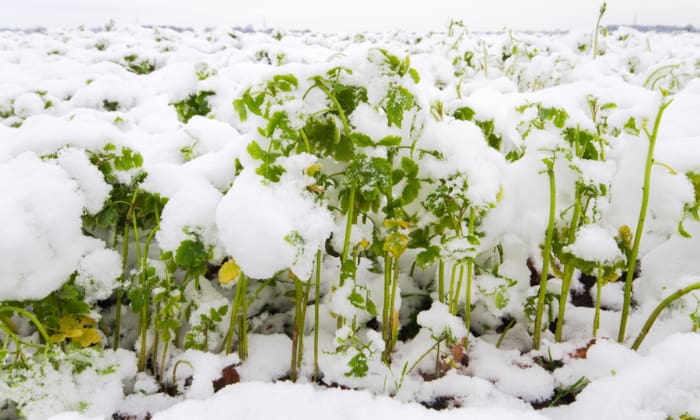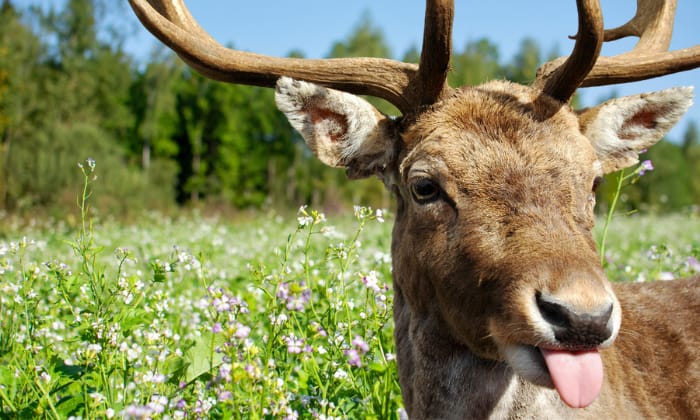Many people want to attract deer to their yards for hunting or photography. Whatever your reason might be for wanting to have deer on your property, growing a food plot can help with that.
Of the different forage types that deer eat, radishes are an excellent choice for cool-season food plots as they sweeten under frost exposure and possess a high level of protein, perfect for wintertime when other food sources are scarce.
If you’re wondering when to plant radishes for deer, the ideal months are late July to early September. In northern areas of the US, planting may begin as early as June.
Table of Contents
Best Time to Plant Radishes for Deer
1. Plant in the fall from July to September.
It makes sense to plant your radish food plot in the fall, given that this cool-season crop grows best under temperatures of 50 to 60℉ and its glucose helps deer prepare for hibernation.
Plus, deer eat other forage plants during the rest of the year and likely won’t touch radishes until winter. They munch on clover during spring; peas, beans, and grains such as corn and milo during summer; and grains along with grasses and legumes in the fall.
So, remember to grow radishes for deer food plots eight to ten weeks before the first frost, since this is how long they need to reach their full potential before winter arrives.
We have listed the planting time for some states below. You can look up your fall frost date and count backward for more accuracy.
2. Planting time for different states
| State | Planting time |
| In Missouri | Mid-July |
| In Wisconsin | August |
| In Minnesota | |
| In Michigan | |
| In Maryland | Early September (up to September 15) |
3. Can I plant radishes in spring?
You can plant daikon radish and other tillage radishes in spring if you live in the north, around April at the earliest.
However, ensure the temperature is at least 50 degrees and not 66 degrees or higher, or the plant will produce seeds and flowers instead of foliage for animals’ consumption.
Note that deer may also not eat radishes in the summer and find them unappetizing, which is another reason why spring planting is nonoptimal.
4. How late is too late to plant radishes?
October is typically the latest month you can grow radishes for deer. However, it is best to use the frost rule above to calculate your final planting date.
The Benefits of Planting Radishes for Deer
The good thing about planting radishes for deer is that you may sow them without tilling. Deer also consume both the plants’ leaves and taproots, so nothing really goes to waste.
Forage benefits aside, the long roots of radishes will help loosen compacted soil and improve moisture absorption, allowing vegetables and other crops to access nutrients better.
Radish roots scavenge nitrogen, potassium, and phosphorus, then release them into the soil, thereby lowering the amount of fertilizer you have to use. Thanks to their ability to suppress weeds and nematodes, these vegetables also make for excellent cover crops.
Steps to Plant Radishes for Deer
- Plant radish seed at a depth of ¼ to ½ inch in a spot with full sun and a soil pH of 6.0. Remove all trees and other vegetation prior to planting, either by hand or with a herbicide.
- If using a no-till drill, spread 8 pounds of pure live seeds per acre at a depth of ¼ to 1 inch. Reduce the quantity to one or two pounds per acre if you’re growing a mix of five cover crops or more.
- Note that radishes do not grow well in soggy soil or places that previously housed their cousins from the brassica family. So, if you plant turnips and radishes, practice crop rotation.
Factors to Consider When Planting Radishes for Deer
- The food plot’s location
Deer prefer areas with natural covers like forest edges or open fields. You should not grow your radishes near public roads, since poachers and other criminals can gather in these locations and target wildlife.
Ensure your main stand is downwind and preferably at the junction of a V or L-shaped landscape. An hourglass design for the food plot will work as well.
- Forage combinations
There’s a possibility the deer will finish off all the radish roots and tops you’ve grown and still need more food to prepare for winter.
In that case, consider planting radishes with other crops like clover and small grains so that they have something to eat. Winter peas, rye, oats, and rape also pair well with radishes.
Choosing the Right Radish Variety for Deer
When it comes to radishes for deer, you should pick varieties explicitly made for food plots. Go for forage or tillage radish, to be specific. Some varieties to keep in mind are:
- Biologic deer radish
This product is suitable for whitetails and late summer or fall planting. It contains up to 38% protein, which is great for healthy growth in deer.
- Trophy radishes
This type is combinable with other winter grasses and legumes, so you can incorporate it into your food plot for variety. Trophy radishes also grow quickly and contain many nutrients, namely zinc and copper.
- Tillage radish
Yes. Tillage is also the name of a radish variety and not just a category of plants you can feed to deer.
This type may be sown four to eight weeks before the first frost, which is somewhat later than the general recommendation we gave above. It has strong roots that can break through clay soil.
- Groundhog radish
Groundhog is an efficient nitrogen scavenger, capable of capturing up to 200 units of nitrogen per acre. If you recently planted corn silage or grain, this variety is a great follow-up plant. Just avoid sowing it under shade.
Caring and Harvesting
Forage radish requires little maintenance. Just keep the soil damp throughout the growing season and leave the crop in the field for deer to find. If you see flea beetles, use row covers or talcum powder to remove them.
Once winter approaches and temperatures reach 25 degrees for several days on end, radishes will automatically die and serve their function as a cover crop.
However, if winter weather is mild where you live and the plants do not rot by themselves, you should kill the radish off with a herbicide before growing other plants.
To collect your forage, keep track of the seeding date and add the maturation period of your variety to it. The result will be harvest time.
Another method is to see whether the shoulders of the radish stick out above ground. If they do, use a trowel to dig around the plant and pull it up.
If you are interested in foods for your deer, click here to know the best time to plant turnips!
Frequently Asked Questions
How often should I water my radishes for deer?
Water your radishes whenever the soil is dry. You should check the food plot regularly if the weather is hot. In most cases, an inch of moisture per week will suffice.
What vegetable do deer like the most?
Like many of us, deer enjoy brassicas like Brussels sprouts, cabbage, cauliflower, broccoli, and turnips. They also love pears, lettuce, carrots, strawberries, corn, and sunflowers.
If you have to pick between radishes vs turnips for deer, know that the former is generally more appealing to deer’s taste buds.
Conclusion
Knowing when to plant radishes for deer is essential to creating that food plot you’ve always dreamed about. In addition to whitetails, radishes also attract turkeys, squirrels, and rabbits, making them an excellent choice of plant for any wildlife enthusiast.

Hi, I am William – Floridayards’ digital content creator. My job is to find answers to all your concerns with thorough research and our team’s expert advice. I will also bring you honest reviews on the best products and equipment for raising your beautiful garden. Please look forward to our work!


